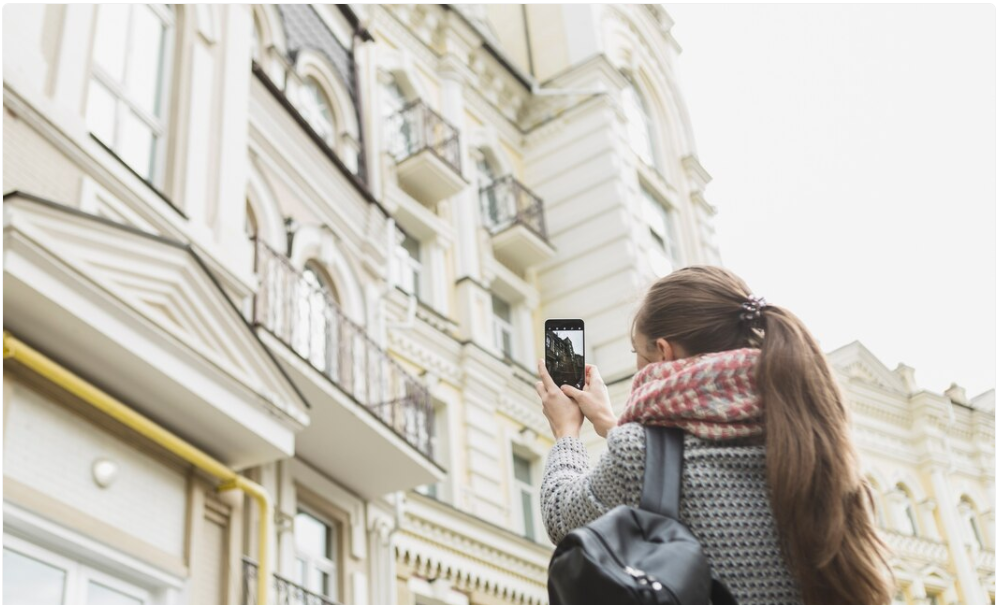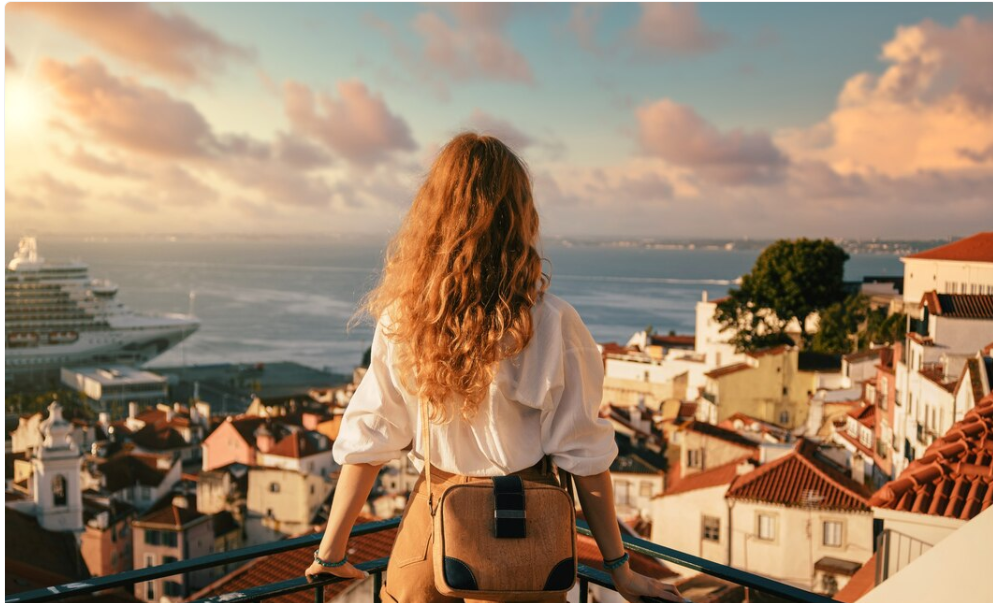
by Dulce Navarro | May 6, 2025 | Countries, Culture, Europe, Lifestyle, Residency
Finding Housing in Paris: A Practical Guide for Expats and Newcomers
Paris, often romanticized for its historic beauty and cultural richness, can be a challenging city when it comes to finding suitable housing — especially for expats and newcomers. The market is highly competitive, prices can be steep, and the paperwork daunting. However, with the right knowledge and strategy, finding a comfortable and affordable place in the City of Light is absolutely possible.
Understanding the Paris Housing Market
The Paris rental market is fast-paced, with high demand and limited inventory, particularly in the more desirable arrondissements. Most apartments are smaller than what many foreigners are used to, and furnished options often come at a premium. Being well-informed and prepared can make a huge difference.
Rental prices vary significantly based on location. Central districts like the 1st, 4th, 5th, and 6th arrondissements tend to be more expensive, while neighborhoods such as the 11th, 12th, 18th, and 20th offer more budget-friendly options without sacrificing charm or convenience.
Where to Begin Your Search
Online platforms are a great starting point. Websites such as SeLoger, PAP, and Leboncoin are commonly used by locals and agents alike. For furnished or short-term rentals, consider platforms like Lodgis, Spotahome, and Paris Attitude. Facebook groups dedicated to Paris housing and expat communities can also be surprisingly useful.
If your French isn’t strong, working with a bilingual real estate agent can ease the process. Keep in mind that many agencies charge a fee equal to one month’s rent, so factor that into your budget.
Types of Housing Available
Paris offers a range of housing types:
- Studios and T1 Apartments: Best for singles or short stays.
- One- to Three-Bedroom Apartments: Suitable for couples or small families, often featuring compact yet charming layouts.
- Serviced Apartments: Ideal for professionals or those staying for several months, offering amenities like cleaning, utilities, and concierge service.
- Colocations (Flatshares): A popular option among students and young professionals to save on costs.
Documentation and Requirements
Landlords in Paris typically request a substantial dossier (application package), which may include:
- Proof of income (usually three times the rent)
- Employment contract or letter of enrollment if you’re a student
- Copies of your ID and visa/residency permit
- Tax returns and/or recent pay slips
- A French guarantor, or a Garantme certificate (an insurance-backed rental guarantee service)
For expats without a French work contract, offering several months’ rent in advance or securing a bank guarantee can help strengthen your application.
Neighborhoods to Consider
Le Marais (3rd & 4th arr.): Trendy and central with boutiques, art galleries, and a diverse community.
Latin Quarter (5th arr.): Ideal for students and academics, close to Sorbonne University.
Canal Saint-Martin (10th arr.): Hip and youthful, with a strong sense of community.
Montmartre (18th arr.): Charming and picturesque, though slightly removed from central business areas.
15th & 16th arr.: Family-friendly and residential, with larger living spaces and good schools.
Costs and Budgeting Tips
On average, rent for a one-bedroom apartment in Paris ranges from €1,000 to €2,000 per month, depending on the arrondissement and amenities. Furnished apartments may include utilities, but always clarify what’s covered before signing. Be sure to account for additional costs such as:
- Utilities (electricity, gas, internet)
- Home insurance (often mandatory in France)
- Agency fees (if applicable)
- Security deposit (typically one to two months’ rent)
Short-Term vs. Long-Term Rentals
If you’re new to Paris and unsure where you want to live long-term, consider starting with a short-term rental while exploring different neighborhoods. This approach can help you make a more informed decision once you’re settled. Long-term leases (bail mobilité or standard lease) offer stability and lower monthly rates but require more documentation.
Avoiding Common Pitfalls
Beware of scams, especially when using online listings. Never send money without seeing the apartment or signing a verified lease. If something sounds too good to be true, it probably is. Use verified agencies and platforms, and consult other expats or local resources when in doubt.
Final Thoughts
Finding housing in Paris may seem intimidating at first, but with research, patience, and the right resources, it’s entirely manageable. Paris is a city that rewards persistence — and once you’ve secured your home, you’ll enjoy everything this incredible city has to offer, from morning croissants at a corner café to evening strolls along the Seine.
Stay Connected for More Travel and Lifestyle Inspiration. For more insights into travel, culture, and lifestyle tips, follow me on Instagram @salvadorordorica. If you’re seeking professional translation and localization services to enhance your global ventures, visit The Spanish Group — your trusted partner in bridging cultures worldwide.

by Dulce Navarro | May 6, 2025 | Culture, Europe, Lifestyle, Travel
Top 7 Best Cities for Expats to Live Comfortably in Spain
Spain has long captured the imagination of those seeking a high quality of life, excellent weather, rich culture, and a relatively affordable cost of living. For expats, it offers an enticing combination of Mediterranean charm and modern infrastructure. Whether you’re a retiree, remote worker, or entrepreneur, Spain’s cities offer diverse experiences tailored to different needs. Below are the top 7 cities in Spain where expats can live comfortably and thrive.
1. Barcelona
As Spain’s second-largest city, Barcelona offers a dynamic blend of cosmopolitan lifestyle and beachside relaxation. Expats enjoy the city’s robust public transport, international schools, and abundant coworking spaces. With a thriving startup ecosystem, it’s also ideal for digital nomads and entrepreneurs. However, the cost of living is slightly higher than in other Spanish cities, particularly in central neighborhoods.
2. Madrid
Spain’s capital, Madrid, is a bustling metropolis with a rich cultural scene, world-class museums, and a vibrant nightlife. It’s an ideal location for professionals due to its strong job market and business hubs. Expats appreciate the city’s energy, extensive metro system, and the relatively low cost of living compared to other European capitals. Madrid also boasts top-tier healthcare and education facilities.
3. Valencia
Valencia strikes a perfect balance between big-city amenities and a relaxed coastal lifestyle. Known for its stunning beaches, paella, and historic sites, this city is a favorite among expats seeking affordability and charm. With a growing international community and lower rent prices than Barcelona or Madrid, Valencia offers excellent value. The city is also bike-friendly and has a pleasant climate year-round.
4. Malaga
Located on the Costa del Sol, Malaga is known for its warm weather, beaches, and laid-back lifestyle. It’s a growing hub for tech and innovation, attracting a younger expat demographic. Malaga’s affordability, combined with its rich Andalusian culture and improved infrastructure, makes it a top choice for those looking to relocate without sacrificing comfort or connectivity.
5. Seville
Seville offers a deep dive into traditional Spanish culture with flamenco, bullfighting, and historic architecture. The cost of living is lower than in the bigger cities, and the local lifestyle is warm and welcoming. Expats looking for an authentic Spanish experience often fall in love with Seville’s charm. However, summers can be extremely hot, so it’s best suited for those who can adapt to the heat.
6. Alicante
Alicante is a smaller coastal city that punches above its weight in terms of quality of life. Known for its excellent beaches, vibrant nightlife, and relaxed vibe, it’s ideal for retirees and remote workers. The city has a large English-speaking community and offers a lower cost of living, making it a practical and attractive choice for many expats.
7. Granada
Granada, home to the famous Alhambra Palace, offers a unique mix of history, natural beauty, and affordable living. It’s a university city, so there’s a youthful energy, and the presence of international students contributes to a diverse and inclusive atmosphere. While it’s smaller than the others on this list, its charm, culture, and cost-effectiveness make it a hidden gem for expats.
Conclusion
Whether you’re drawn to the cultural heartbeat of Madrid, the innovation of Barcelona, or the coastal charm of Valencia and Malaga, Spain offers something for every expat. From world-class healthcare and education to an inviting climate and friendly locals, Spain continues to be a top destination for those seeking comfort, opportunity, and adventure.
Stay Connected for More Travel and Lifestyle Inspiration. For more insights into travel, culture, and lifestyle tips, follow me on Instagram @salvadorordorica. If you’re seeking professional translation and localization services to enhance your global ventures, visit The Spanish Group — your trusted partner in bridging cultures worldwide.

by Dulce Navarro | May 5, 2025 | Countries, Culture, Europe, Lifestyle, Residency
The Ultimate Expat Guide to Living and Thriving in France
Moving to France is a dream for many — with its charming towns, stunning countryside, world-renowned cuisine, and cultural sophistication, it’s easy to see why. But making the leap to becoming an expat in France requires thoughtful planning, clear expectations, and an open mind. This comprehensive guide will help you navigate the most important aspects of life in France and set yourself up for success in your new home.
Understanding the French Lifestyle
One of the first things you’ll notice is that life in France tends to move at a more relaxed pace. The French prioritize quality over quantity — whether it’s food, conversation, or leisure time. Embracing this mindset is key to integrating smoothly into society. Expect shops to close for lunch, and don’t be surprised by long, leisurely meals. Respecting cultural norms such as saying “bonjour” upon entering a store or waiting patiently in queues can go a long way in establishing positive relationships with locals.
Visa and Residency Essentials
If you’re not a citizen of an EU country, you’ll need a visa to live in France long-term. The most common types for expats include the long-stay visa (visa de long séjour) and the residence permit (titre de séjour). Depending on your reason for moving — work, retirement, or study — you may need different supporting documents. It’s crucial to begin your application process early, as French bureaucracy is notoriously slow and detail-oriented.
Cost of Living and Budgeting Tips
France offers a wide range of living costs depending on your location. Paris is the most expensive city, with high rent and dining prices. In contrast, rural areas or smaller cities like Lyon, Montpellier, or Nantes offer a more affordable lifestyle. Budgeting for rent, groceries, health insurance, and transportation is vital. Many expats find that enrolling in France’s public healthcare system, known as PUMA, greatly reduces medical expenses. Supplementary insurance (mutuelle) is also common and recommended.
Finding Housing in France
Finding a place to live can be one of the most challenging parts of the relocation process. Options range from modern city apartments to centuries-old countryside homes. Websites like SeLoger, Leboncoin, and PAP are popular for rental and property searches. Be prepared to submit a dossier (application file) including proof of income, references, and identification. Working with a relocation agent or property consultant can streamline the process, especially if you don’t yet speak fluent French.
Learning the Language
While it’s possible to get by in tourist areas with English, learning French will enrich your experience and help you integrate into your community. Many towns offer affordable language classes for expats. Apps like Duolingo and Babbel are useful, but real progress often comes from immersion — chatting with neighbors, ordering in cafés, and watching French TV. Don’t be afraid to make mistakes; locals generally appreciate the effort.
Navigating Work and Business Life
France has a strong labor code, generous vacation policies, and a work culture that values boundaries between personal and professional life. If you’re employed by a French company, expect to receive 25+ days of paid holiday, plus public holidays. Entrepreneurs can register under different statuses like auto-entrepreneur or SARL depending on their business model. Understanding French tax regulations and hiring a local accountant can help you stay compliant and avoid stress.
Healthcare and Well-Being
The French healthcare system is among the best in the world, with universal coverage and excellent medical care. After registering with the CPAM (Caisse Primaire d’Assurance Maladie), you’ll receive a carte vitale, which gives you access to heavily subsidized services. Mental health services are also widely available and increasingly prioritized. Pharmacies are everywhere and play an active role in minor health consultations.
Social Life and Making Connections
Building a social network takes time, but it’s very possible through local events, sports clubs, language exchanges, and online groups like Meetup or Internations. Many French cities have expat communities, but making French friends can be deeply rewarding. Participate in local festivals, community events, and simply take the time to get to know your neighbors.
Education for Families
If you’re moving with children, the French education system offers both public and private options. Public schools are generally high-quality and free, but often conducted entirely in French. International schools are available in larger cities and may follow American, British, or IB curricula. Enrolling your child early can help them integrate linguistically and socially.
Transportation and Getting Around
France has an excellent transportation infrastructure. The SNCF train system connects major cities quickly, and local metro and bus networks are reliable. Owning a car is more common in rural areas, but less necessary in urban environments. If you have a valid driver’s license from your home country, you may need to exchange it for a French one depending on your nationality.
Final Thoughts
Living in France as an expat is an enriching and fulfilling experience, combining the best of culture, cuisine, and quality of life. While the transition can involve bureaucracy and adaptation, the rewards of daily croissants, vibrant markets, and meaningful cross-cultural exchanges make it all worthwhile.
Stay Connected for More Travel and Lifestyle Inspiration
For more insights into travel, culture, and lifestyle tips, follow me on Instagram @salvadorordorica. If you’re seeking professional translation and localization services to enhance your global ventures, visit The Spanish Group — your trusted partner in bridging cultures worldwide.

by Dulce Navarro | May 5, 2025 | Culture, Europe, Lifestyle, Travel
Hidden Wine Trails and Budget Adventures Across Italy and Spain
When people think of Italy and Spain, their minds often leap to famous cities like Rome, Florence, Barcelona, and Madrid. But beyond the usual tourist destinations lie hidden wine trails and cultural treasures waiting to be explored—many of which can be enjoyed without breaking the bank. Whether you’re a wine enthusiast, a history buff, or an adventurous traveler seeking authentic experiences, these lesser-known regions in Italy and Spain offer a perfect blend of tradition, flavor, and affordability.
Italy’s Hidden Wine Gems
1. Le Marche – Verdicchio & Verdant Hills
Often overshadowed by its more famous neighbors Tuscany and Umbria, Le Marche offers a peaceful countryside filled with medieval hill towns and pristine vineyards. The region is best known for Verdicchio, a crisp and floral white wine that pairs beautifully with seafood from the nearby Adriatic Sea. Many of the local wineries offer free or low-cost tastings, especially in towns like Jesi and Matelica. Enjoy stunning views while sipping wine in serene settings far from the usual tourist crowds.
2. Piedmont – Barbera and Rustic Charm
While Barolo and Barbaresco are well-known to wine aficionados, the charming countryside of Piedmont also boasts a range of affordable varietals like Barbera and Dolcetto. Explore the towns of Asti and Alba, where family-run vineyards open their doors to travelers eager to taste robust reds in a rustic setting. A visit during the fall truffle season adds a touch of decadence without overwhelming your budget.
3. Calabria – Wine at the Edge of the World
Down in Italy’s deep south lies Calabria, a rugged region where time seems to slow down. The Cirò region is home to one of Italy’s oldest wine traditions, producing intense reds from the Gaglioppo grape. Tourism is minimal, so costs are low, and the experience is refreshingly authentic. Spend your days hiking along the coast, visiting ancient ruins, and enjoying hearty meals with locally produced wines for a fraction of the price you’d pay up north.
Spain’s Affordable Wine Escapes
1. La Rioja – Beyond the Big Labels
La Rioja is synonymous with Spanish wine, but beyond the major bodegas lie small producers crafting exceptional vintages at friendly prices. Towns like Haro and Laguardia are filled with underground cellars, and many offer walk-in tastings for just a few euros. Stay in charming guesthouses, rent a bike, and cruise through vineyards with the mountains as your backdrop. It’s wine country at its most accessible and scenic.
2. Rías Baixas – Albariño by the Sea
On Spain’s northwestern coast, the Rías Baixas region is a hidden jewel for white wine lovers. The crisp, mineral-rich Albariño pairs wonderfully with fresh Galician seafood, and the coastal landscapes are nothing short of breathtaking. Visit the town of Cambados during its summer wine festival or explore smaller fishing villages where wine flows freely and prices remain modest.
3. Jumilla – Robust Reds Without the Fuss
Located in southeastern Spain, Jumilla is a rising star on the Spanish wine scene. Its dry climate is ideal for Monastrell grapes, which produce bold, rich reds at bargain prices. The region’s wineries are eager to welcome visitors and typically offer generous tastings. Add in local tapas and historical sites like the Castillo de Jumilla, and you’ve got a wine adventure that’s both flavorful and frugal.
Budget Tips for Exploring Wine Regions
- Travel Off-Season: Visit in spring or fall to avoid crowds and benefit from lower prices.
- Use Public Transportation: Trains and buses connect most wine regions and are more economical than renting a car.
- Book Tastings Directly: Contact wineries in advance—many offer free tours or tastings with advance notice.
- Stay Local: Agriturismos in Italy and rural casas in Spain provide affordable lodging with a personal touch.
- Eat Like a Local: Opt for menus del día (set daily menus) in Spain and trattorias in Italy for authentic meals on a budget.
Conclusion
Italy and Spain are rich in wine, culture, and charm—and you don’t need a luxury budget to enjoy them. By stepping off the beaten path and exploring hidden wine trails, travelers can discover authentic flavors, warm hospitality, and stunning landscapes without the crowds or the cost. Whether you’re sipping Verdicchio in a quiet Italian village or enjoying Albariño by the Spanish coast, these experiences offer memories that will last a lifetime.
Stay Connected for More Travel and Lifestyle Inspiration. For more insights into travel, culture, and lifestyle tips, follow me on Instagram @salvadorordorica. If you’re seeking professional translation and localization services to enhance your global ventures, visit The Spanish Group — your trusted partner in bridging cultures worldwide.

by Dulce Navarro | May 2, 2025 | Culture, Europe, Lifestyle, Travel
Off the Beaten Path: Unique Destinations in Europe You’ve Never Heard Of
When travelers dream of Europe, they often envision the Eiffel Tower in Paris, the canals of Venice, or the ruins of Athens. While these iconic destinations have rightfully earned their fame, the continent also hides a trove of lesser-known gems waiting to be explored. For seasoned travelers and curious adventurers alike, these off-the-beaten-path European destinations offer untouched beauty, unique culture, and unforgettable experiences—without the tourist crowds.
1. Dinant, Belgium
Nestled in the Walloon region of Belgium, Dinant is a small city draped along the Meuse River. Known for its dramatic cliffside citadel and saxophone heritage—this is the birthplace of Adolphe Sax—Dinant surprises visitors with its postcard-worthy vistas and tranquil charm. Enjoy a river cruise, visit the Collegiate Church of Notre Dame, and taste the region’s famous flamiche (a cheese tart) and local beer.
2. Mostar, Bosnia and Herzegovina
With its iconic Stari Most (Old Bridge) spanning the turquoise Neretva River, Mostar is a city where East meets West. Though still under the radar for many tourists, Mostar’s cobblestone streets, Ottoman-influenced architecture, and friendly locals provide a vivid glimpse into the country’s complex history and cultural fusion. Visit during early spring or late fall to avoid peak-season crowds and fully enjoy the warm hospitality.
3. Hallstatt, Austria
Though gaining popularity through social media, Hallstatt still feels like a fairytale village hidden in the Alps. Located on the shores of Hallstätter See, this tiny lakeside town offers serene beauty, ancient salt mines, and dramatic mountain views. Visitors can explore the Ice Cave, take a boat ride, or hike the nearby Dachstein trails. It’s an idyllic escape for those looking to reconnect with nature in a peaceful alpine setting.
4. Kotor, Montenegro
Kotor may be Montenegro’s best-kept secret. Enclosed in a medieval fortress and located on a stunning bay often compared to a fjord, Kotor’s blend of natural beauty and historic charm is unmatched. Climb the fortress wall to the Castle of San Giovanni for panoramic views, stroll through the Old Town’s labyrinthine streets, and enjoy fresh seafood at harborside cafes.
5. Alberobello, Italy
This quaint town in Puglia is famous for its trulli—whitewashed stone huts with conical roofs. Alberobello feels like a storybook setting and is a UNESCO World Heritage site that’s ideal for slow travel. Wander among the trulli, taste local olive oils and wines, and explore nearby countryside villages for an immersive cultural experience.
6. Veliko Tarnovo, Bulgaria
Often referred to as the “City of the Tsars,” Veliko Tarnovo was once the medieval capital of the Second Bulgarian Empire. Today, its hillside homes, ancient fortress, and sweeping views make it a captivating place to visit. The Tsarevets Fortress is a highlight, and the town’s thriving arts scene, cozy cafes, and preserved traditions provide a deep dive into Bulgarian culture.
7. Piran, Slovenia
Slovenia’s tiny sliver of Adriatic coastline hides the charming town of Piran, where Venetian architecture, seafood cuisine, and picturesque sunsets come together. With its car-free old town, narrow alleys, and seaside promenades, Piran is a slower, more peaceful alternative to Italy’s crowded coastal cities. Enjoy fresh calamari, explore the city walls, and take a dip in the crystal-clear waters.
8. Gjirokastër, Albania
This UNESCO World Heritage site in southern Albania is known for its Ottoman-era architecture and cobbled streets. Gjirokastër is a cultural jewel, home to an imposing hilltop castle, charming guesthouses, and rich folklore. Far from tourist hotspots, it offers a warm, authentic travel experience with breathtaking views of the Drino Valley.
Why Explore the Road Less Traveled?
Choosing lesser-known destinations doesn’t mean compromising on experience. In fact, it often results in deeper connections, quieter moments, and a more sustainable approach to tourism. From unique accommodations to local delicacies, these hidden gems reveal the soul of Europe in unexpected ways.
Whether you’re planning your next trip or dreaming about future adventures, consider stepping off the well-worn path and into a Europe that few have discovered—but all who do, fall in love with.
Stay Connected for More Travel and Lifestyle Inspiration
For more insights into travel, culture, and lifestyle tips, follow me on Instagram @salvadorordorica. If you’re seeking professional translation and localization services to enhance your global ventures, visit The Spanish Group — your trusted partner in bridging cultures worldwide.

by Dulce Navarro | May 1, 2025 | Culture, Europe, Lifestyle, Travel
Exploring the Finest Wine Regions of Spain: A Traveler’s Guide
Spain, one of the world’s most beloved wine-producing countries, boasts a landscape as rich and diverse as the wines it produces. From the rugged mountains of Rioja to the sun-drenched plains of Andalusia, Spain’s wine regions offer an immersive experience for both novice wine lovers and seasoned connoisseurs. With centuries of viticulture heritage, distinct grape varieties, and world-renowned bodegas, this guide explores the finest wine destinations across the country and offers insights to make the most of your wine travels.
1. La Rioja – The Heart of Spanish Wine
No exploration of Spanish wine is complete without a journey to La Rioja, the country’s most iconic wine region. Nestled in the north, Rioja is home to hundreds of wineries—both historic and avant-garde—that craft wines primarily from the Tempranillo grape. Divided into three sub-regions (Rioja Alta, Rioja Alavesa, and Rioja Oriental), it offers a scenic landscape of vineyards, medieval villages, and the Ebro River meandering through its valleys.
Visitors can tour renowned wineries such as Marqués de Riscal or CVNE, take part in wine tastings, and enjoy gourmet meals in wine hotels or local restaurants. The region’s wine museum in Briones is also a must for understanding the cultural significance of Rioja wines.
2. Ribera del Duero – Bold Wines and Majestic Vistas
Located along the Duero River in Castilla y León, Ribera del Duero has become one of Spain’s top wine-producing areas in recent decades. Known for its full-bodied red wines made from the Tinta del País grape (a local clone of Tempranillo), the region offers a sophisticated wine experience in a more rustic, countryside setting.
Wineries such as Vega Sicilia and Dominio de Pingus are recognized internationally, and many offer private tastings, guided tours, and luxury accommodations. The nearby town of Peñafiel is home to an impressive castle with a wine museum inside, combining history with viticulture. If you’re seeking bold, structured reds with aging potential, this is your region.
3. Priorat – Mountain Vines and Powerful Reds
In the rugged hills southwest of Barcelona lies Priorat, one of only two Spanish regions with the prestigious DOCa designation (shared with Rioja). Priorat’s distinctive terroir, characterized by llicorella slate soils and steep vineyards, produces concentrated wines with depth and complexity.
Garnacha (Grenache) and Cariñena are the dominant grapes here, creating powerful reds that reflect the rugged landscape. Wineries are often small and family-owned, giving visitors an intimate look into artisanal winemaking. Don’t miss tastings at Clos Mogador or Alvaro Palacios, two of the most acclaimed producers in the area.
4. Penedès – Sparkling Wines and Modern Innovation
Just a short drive from Barcelona, Penedès is Spain’s most prominent sparkling wine region, known for producing Cava. The region offers a mix of tradition and innovation, with both large producers and boutique vineyards contributing to a dynamic wine scene.
While Cava—made using the traditional method with native grapes like Macabeo, Xarel·lo, and Parellada—is the region’s crown jewel, Penedès also produces quality still wines. Wineries such as Freixenet and Codorniu provide immersive experiences, from cellar tours to train rides through the vineyards. Sustainability and organic practices are also gaining traction, making it a forward-thinking destination for wine lovers.
5. Rías Baixas – The Coastal White Wine Haven
Situated in Galicia in Spain’s northwestern corner, Rías Baixas is synonymous with Albariño, a crisp and aromatic white wine perfect for seafood pairings. The region’s Atlantic climate and lush green landscapes provide a refreshing contrast to Spain’s warmer, drier interiors.
The wine route here is a scenic delight, passing through fishing villages, granite wineries, and coastal estuaries. Be sure to visit towns like Cambados or O Grove, where you can enjoy fresh oysters paired with chilled Albariño while overlooking the sea. The region’s blend of maritime culture and elegant wines make it a unique stop on any Spanish wine tour.
6. Jerez – The Birthplace of Sherry
In southern Spain lies Jerez de la Frontera, the historic home of Sherry. This fortified wine comes in various styles—from bone-dry Fino to the rich and sweet Pedro Ximénez—and is produced using a unique solera aging system.
Wineries like Bodegas Tío Pepe and Fundador offer deep dives into the craft of Sherry making, including barrel tastings and flamenco shows. The city of Jerez itself offers a cultural blend of Moorish architecture, Andalusian traditions, and culinary delights. Sherry may not be as trendy as other wines, but it’s an essential part of Spain’s vinous identity.
Tips for Planning Your Spanish Wine Tour
- Renting a car is ideal for exploring wine regions at your own pace.
- Book winery tours in advance, especially for popular estates.
- Pair wine visits with local festivals or harvest seasons for a richer experience.
- Brush up on basic Spanish wine terminology—it enhances tastings and conversations.
Conclusion
Spain’s wine regions are as diverse as its people, landscapes, and traditions. Whether you’re indulging in the bold reds of Ribera del Duero, sipping sparkling Cava in Penedès, or savoring the coastal freshness of Albariño in Rías Baixas, there’s something for every palate and traveler. Exploring Spain through its wine is not just a journey of taste, but a celebration of culture, history, and craftsmanship.
Stay Connected for More Travel and Lifestyle Inspiration. For more insights into travel, culture, and lifestyle tips, follow me on
@salvadorordorica. If you’re seeking professional translation and localization services to enhance your global ventures, visit
The Spanish Group — your trusted partner in bridging cultures worldwide.






